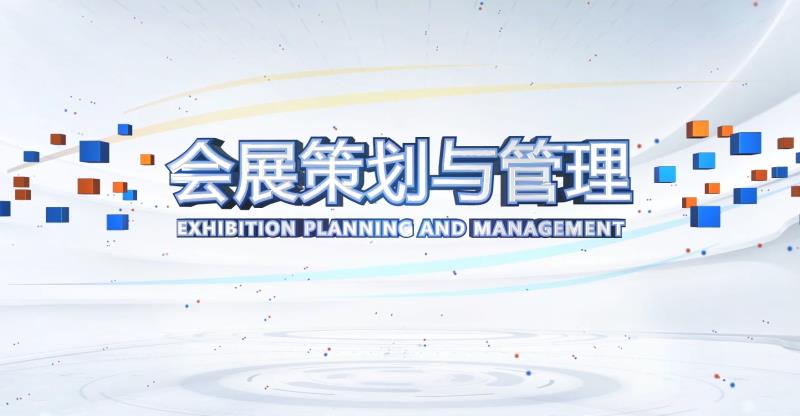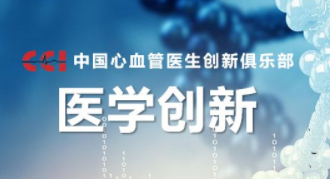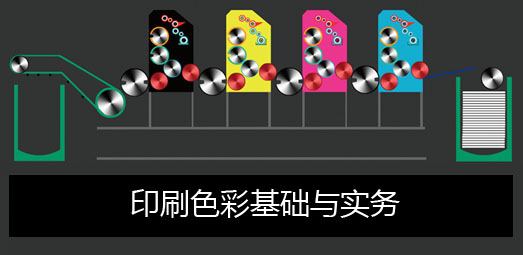
当前课程知识点:Production Engineering > Chapter 9 Acidizing > 9.0 Introduction > 9.0 Introduction
返回《Production Engineering》慕课在线视频课程列表
返回《Production Engineering》慕课在线视频列表
同学们好本章我们学习酸处理
技术首先在本节中我们介绍的是
酸处理的概述首先我们先看一下
近井地带污染与改善这个话题这
是一个近井地带的示意图我们
学习了油井的表皮细数它的计算
公式分别是地层的渗透率污染带
的渗透率以及污染区域的半径和
井筒的半径带入之后就可以得到
存在有污染的情况之下油井的
表皮值的大小在这里面我们要举
一个例子如果井筒的半径0
328英尺污染半径是328
英尺如果地层的渗透率和污染带
的渗透率相比分别是五倍和十倍
的关系也就是污染之后渗透率是
原来的105分之一那么对应的
表皮值就是93和209给我们
的启示是什么呢在井筒周围一个
很小的区域之内也就是近井地带
它的污染区域在328英尺一米
左右的这样的一个距离内如果
发生了乌榄使得渗透率下降了
那么它带来的表皮是非常大的
如果是渗透率下降到原来的
110了那么表皮呢能够达到
209会非常大的影响油井的
产量那么从另外一个角度来讲
如果我们采取一定的措施使得
渗透率恢复了表皮重新变为零了
那么这个时候油井的产量恢复它
的效果也是非常明显的这一点
就是我们进行酸处理的基础和
依据也就是酸处理技术是对近井
地带一个比较小的区域之内进行
的处理技术它是相对水力压裂
形成的裂缝大的施工规模高的
投入形成一个比较长的裂缝相比
而言的但是作为这种小规模小
投入的这种酸处理技术对于特定
的地层条件特定的油井状态对于
油井的产量恢复它的效果也是会
非常明显的酸化的原理是什么呢
就是通过酸液对岩石交接物或者
是地层孔隙内裂缝内的堵塞物志
进行溶解和荣时恢复提高地层
孔隙和裂缝内的渗透性通过这种
酸化的原理我们可以看到它是对
岩石之内交接物或者是孔隙之内
的堵塞物进行溶解融时的反应
那么就意味着不同的储存条件它
的岩石性质化学成分不一样我们
能够起到溶解和溶蚀作用的酸
选择的就要不一样这是一个方面
另外一点就是这种处理的过程是
一种反应的过程而这种反应是要
消耗酸的酸性的那么就意味着
注入到地层里的酸是边向前渗透
扩散边和周围的地层反应而随着
反应的进行酸性就逐渐的降低了
选择合适的酸同时我们要尽量的
让反应的速度慢一些能够让它慢
一些就能使酸楚里的范围更远
一些因此酸化的过程要实现一个
更慢的反应速度要处理一个更远
更大的作用的范围这是我们追求
的目标酸处理的类型根据作业
规模分为几种类型一种叫做酸洗
用少量的酸液清洗井筒疏通射孔
孔眼第二季之酸化低于岩石的
破裂压力情况之下将酸注入到
地层是地层中起到一个溶蚀的
作用恢复地层的渗透率而压裂
酸化指的是高于岩石破裂压力的
情况之下将酸液注入地层形成了
裂缝而用不均匀的熔蚀来形成高
导流的裂缝这就是从规模由小到
大作业的压力由低到高三种主要
的酸处理的形式在这里面主要
应用的基质酸化我们来看针对于
砂岩地层和碳酸盐地层来说我们
注入到地层里的酸它是多大的
范围之内起作用它是以什么样的
形态存在的呢有两张图片我们
可以看到这是处理了言行之后的
扫描的图片这里面对于砂岩储层
来说它所处理的范围是英尺的
范围之内那么酸液是在里面是以
这种状态存在的相对来说在酸盐
地层里面处理的范围要更小一些
而碳酸盐的储层是裂缝与孔隙
或者是孔隙裂缝为主的储集空间
注入到酸液酸化了之后它的处理
范围可以达到十英尺而酸液在储
层中分布的状态是这样的一种
状态这里面就给我们一个有效的
提示砂岩地层碳酸盐地层处理的
范围不同我们关注的关注点也就
有所区别我们追求的酸化的目标
也就有所区别最后酸呀酸呀是
通过酸液对于裂缝表面不均匀的
溶蚀作用形成了凹凸不平的表面
那么这样的表面再闭合的时候就
有效的支撑出了一条裂缝这种
支撑方式是区别于水力压裂采用
支撑剂的这种支撑方式的这就是
酸化压裂和水力压力的主要的
不同那么这些知识都是在本章中
介绍的主要的内容以上就是本节
的主要内容同学们再见嗯
-1.1 Main Tasks of Production Engineering
--1.1 Main Tasks of Production Engineering
-1.2 Flow in Production System
--1.2 Flow in Production System
-Problems
--Chapter 1 - Problems
-2.1 IPR Curve and Well Productivity
--2.1.1 Single-Phase Oil Inflow Performance Relationships
-2.2 Vogel's IPR and Applications
--2.2.2 Determination of IPR Curves Using Vogel's Equation
--2.2.3 Skin Factor and Flow Efficiency
--2.2.4 Extension of Vogel's Equation for Non-Complete Wells
--2.2.5 Combination Single-Phase Liquid and Two-Phase Flow
-Problems
--Chapter 2--Problems
-3.1 Two-Phase Flow in Wellbore
--3.1.1 Flow Regimes in Vertical Flow
-3.2 Two-Phase Vertical Flow Pressure Gradient Models
--3.2.1 Two-Phase Pressure Gradient Equations
--3.2.2 Predicting Gas-Liquid Flow Regimes Using the Okiszewski Correlation
--3.2.3 Pressure Gradient Calculation Using the Okiszewski Correlation
-3.3 Vertical Lift Performance
--3.3 Vertical Lift Performance
-Problems
--Chapter 3--Problems
-4.1 Nodal Analysis Approach
--4.1.2 Solution Node at Bottom of Well
--4.1.3 Solution Node at Wellhead
-4.2 Flow through Chokes
--4.2.2 Solution Node at Choke
-Problems
--Chapter 4--Problems
-5.1 Principles of Gas Lift
--5.1.2 Initial Kick-off of Gas Lift
-5.2 Gas Lift Valves and Gas Lift Completions
-5.3 Gas Lift Design
--5.3.1 Gas Lift Design for Specific Production Rate
--5.3.2 Gas Lift Design for Specific Injection Rate
--5.3.3 Kick-off Procedure with Unloading Valves
--5.3.4 Design Depths of Unloading Valves
-Problems
--Chapter 5--Problems
-6.1 Introduction of Surface and Downhole Equipment
-6.2 Operating Principle of Sucker Rod Pumps
-6.3 Pumping Unit Kinematics
--6.3.1 Motion of Polished Rod-Simple Harmonic Motion
--6.3.2 Motion of Polished Rod-Crank and Pitman Motion
-6.4 Polished Rod Load
--6.4.3 Peak Polished Rod Load and Minimum Polished Rod Load
-Problems
--Problems for chapter 6: Sucker Rod pumping I
-6.5 Calculation of Counterbalancing, Torque and Power
--6.5.1 Balance of Pumping Unit
--6.5.2 Counterbalancing Calculation
--6.5.3 Torque and Torque Factor
-6.6 Volumetric Efficiency of Pump
--6.6.2 Gas Effect on Pump Performance
--6.6.3 Measures of Enhancing Pump Volumetric Efficiency
-6.7 Design of Pumping System
--6.7.1 Strength Calculation and Design of Sucker Rod Strings
--6.7.2 Design Procedures of Pumping System
-6.8 Analysis of Sucker Rod Pumping Well Conditions
--6.8.1 Acoustic Surveys and Analysis of Annular Liquid Levels
--6.8.2 Introduction of Dynamometer Card
--6.8.3 Typical Dynamometer Cards
-Problems
--Problems: Chapter 6: Sucker Rod Pumping (II)
-7.1 Water Injection System
--7.1.1 Water Resources and Water Treatment
--7.1.2 Introduction of Water Injection System
-7.2 Injectivity Analysis
--7.2.1 Injectivity and Injectivity Index Curves
-7.3 Injection Tubing String
--7.3 Introduction of Injection Tubing Strings
-7.4 Analysis and Application of Injectivity Index Curves
--7.4.1 Analysis of Injectivity Index Curves
--7.4.2 Injection Choke Deployment
-Problems
--Chapter 7--Problems
-8.0 Introduction
-8.1 The Fracturing of Reservoir Rock
--8.1.1 Basic Rock Mechanics Parameters
--8.1.4 Fracture Initiation Conditions
-Problems
--Chapter 8(I)--Problems
-8.2 Fracturing Fluids
--8.2.2 Fluid-Loss Properties of Fracturing Fluids
--8.2.3 Rheological Properties of Fracturing Fluids
-8.3 Proppants
-8.4 Hydraulic Fracturing Design
--8.4.1 Productivity Index of Hydraulic Fracturing Wells
--8.4.2 Fracture Geometry Models
--8.4.3 Design Procedure for Hydraulic Fracturing
-Problems
--Chapter 8(II)--Problems
-9.0 Introduction
-9.1 Carbonate Acidizing
--9.1.1 Mechanism of Carbonate Acidizing
--9.1.2 Effect Factors of Reaction Rate
--9.1.4 Effective Distance of Live Acid
-9.2 Sandstone Acidizing
--9.2.1 Mechanism of Sandstone Acidizing
--9.2.2 Mud Acid Treatment Design
-9.3 Acidizing Treatment Technologies
--9.3.2 Acidizing Treatment Operations
-Problems
--Chapter 9--Problems
-Final Exam




